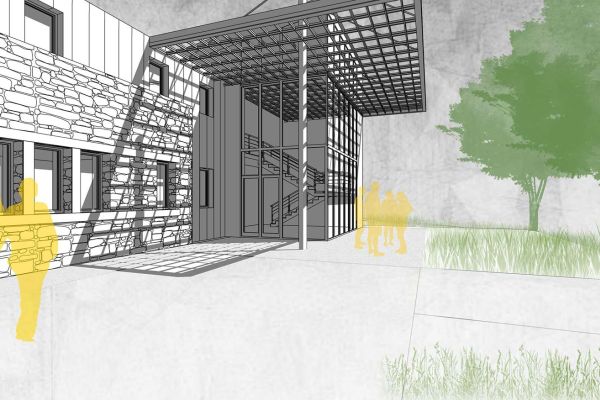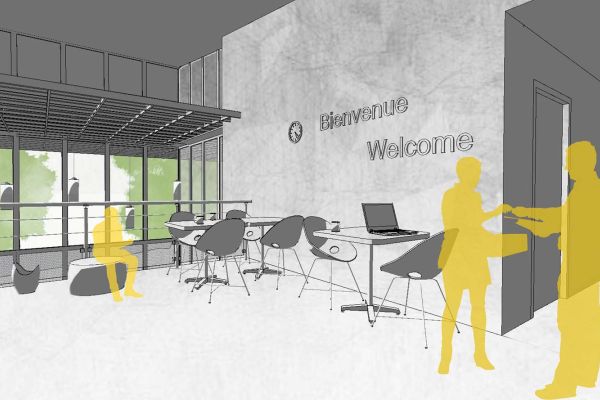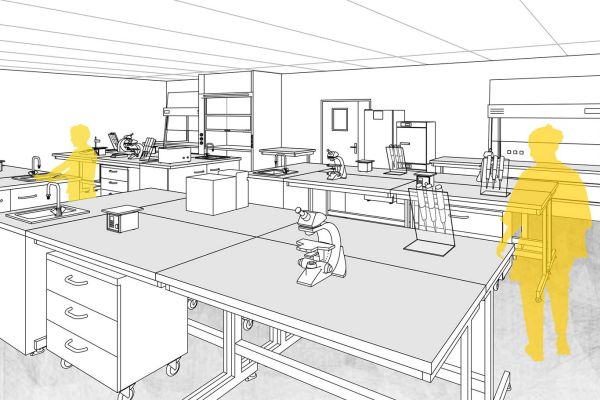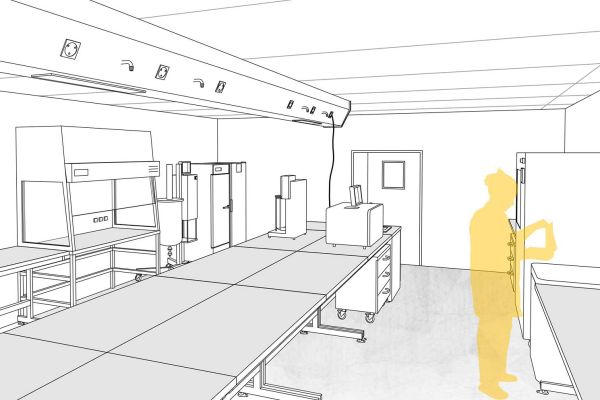Construction of a
centre of excellence
in microbiology
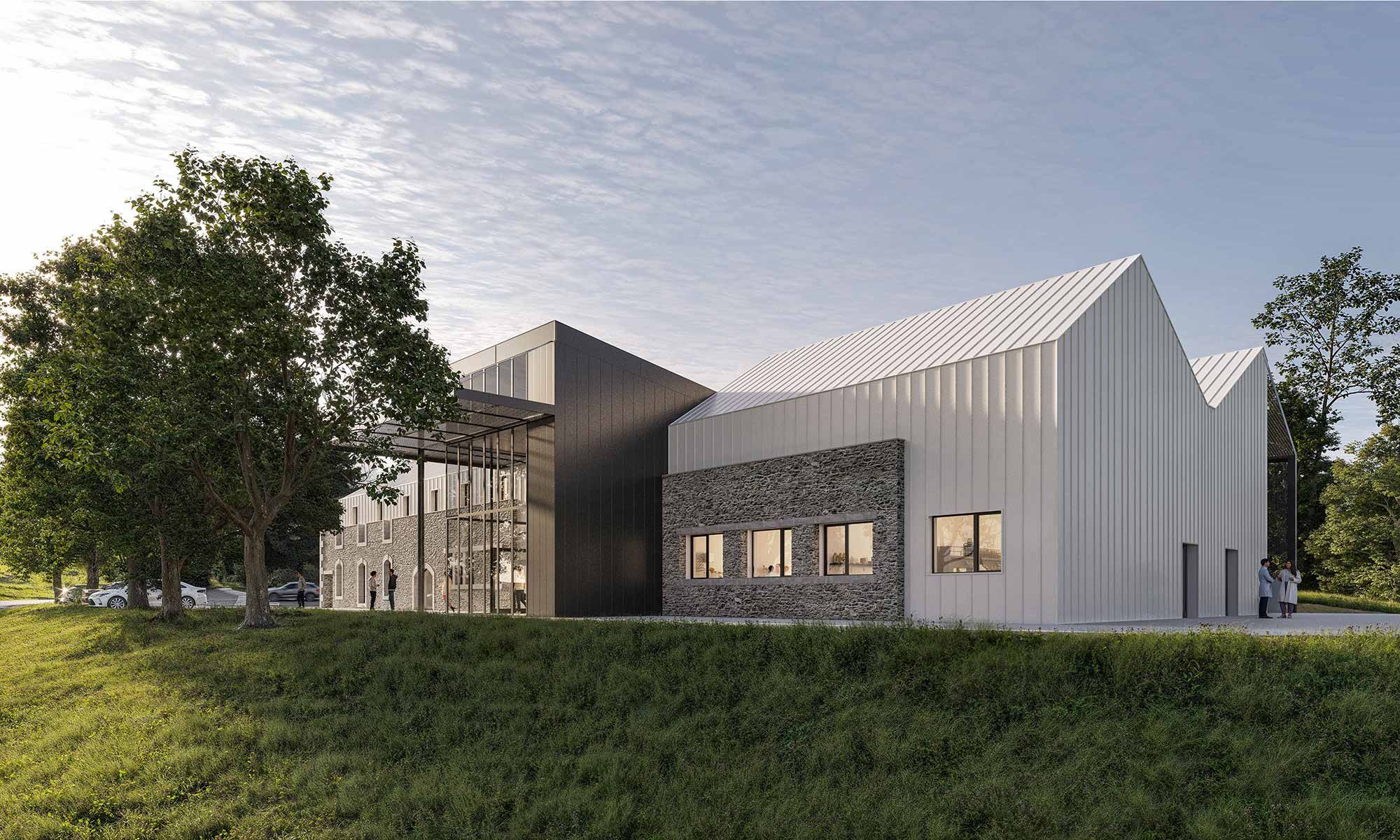
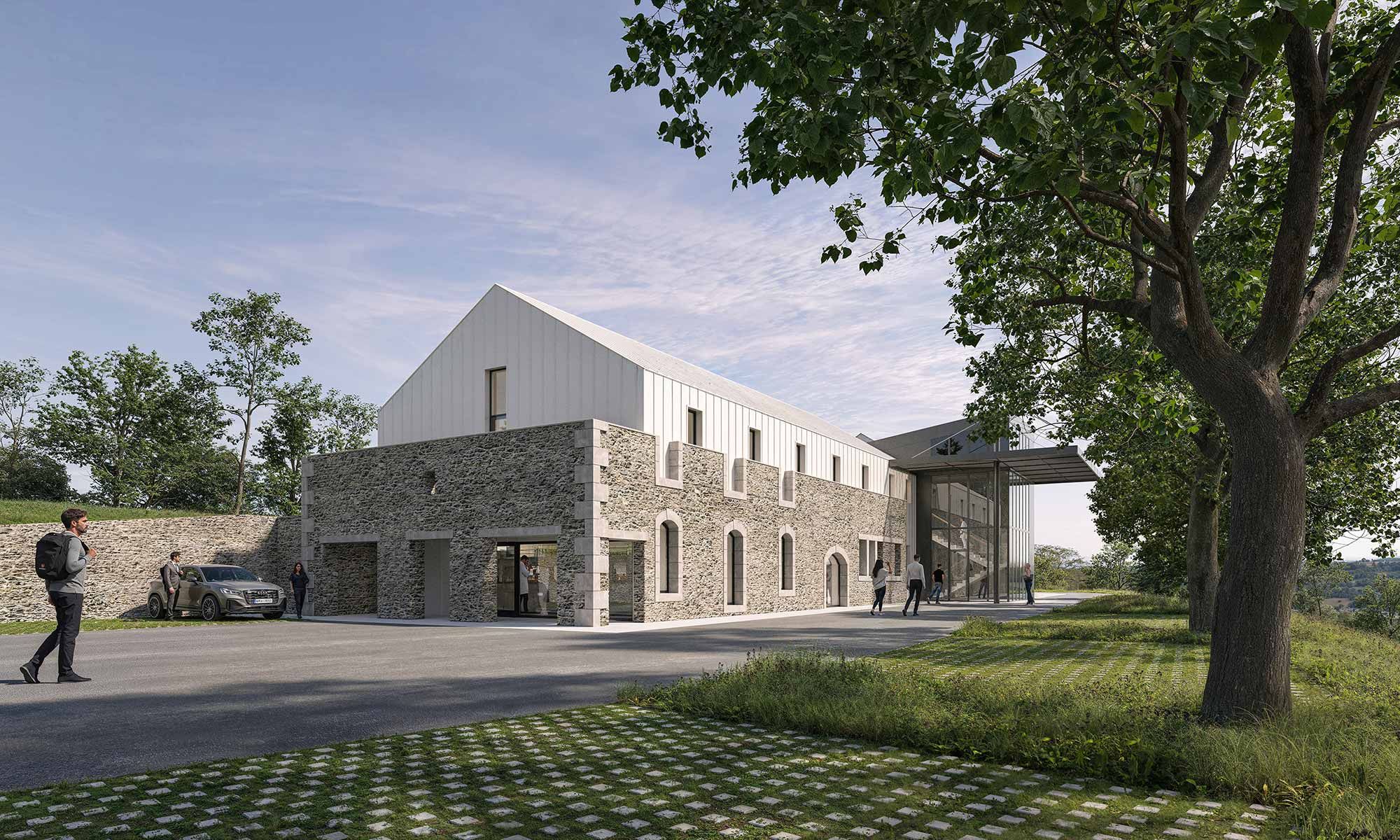
Situated on the hills, to the north of the historic centre of Aurillac, next to the agricultural high school, overlooking the LIP and the UMRF, the land faces south with attractive views. It is divided into two areas : a large field below the « Route des Crêtes » and a high « platform » occupied by an old, partly ruined farmhouse with an attached barn. These two areas are separated by a high embankment bordered by a line of remarkable trees, including several century-old lime trees.
The project has three main volumes. The first will house the majority of the ERP section; it consists of the restoration of the old barn house, restoring its volumetry.The second volume is the building's hub: it will host the reception area, changing rooms, toilets and the main vertical walkways.It literally ‘cuts the old farmhouse in two’, allowing the construction of a third part with a grid layout optimised to accommodate the area dedicated to research laboratories.
At first glance, one might think that the lower part of the site would offer more space for building. However, we have made the choice to locate the project on the upper part of the site, using the ruins of the barn, since we felt that this was the best option for the site and the programme, for the following reasons.
This solution will ensure that the building blends perfectly into the site, particularly in terms of its visibility of the Château Saint-Etienne, offering the best possible views of the town for future users of the building.
Existing accesses will be used, and traffic could be organised around the microbiology centre without disrupting the site, which would be complicated to do in the lower part of the site, far below the road.
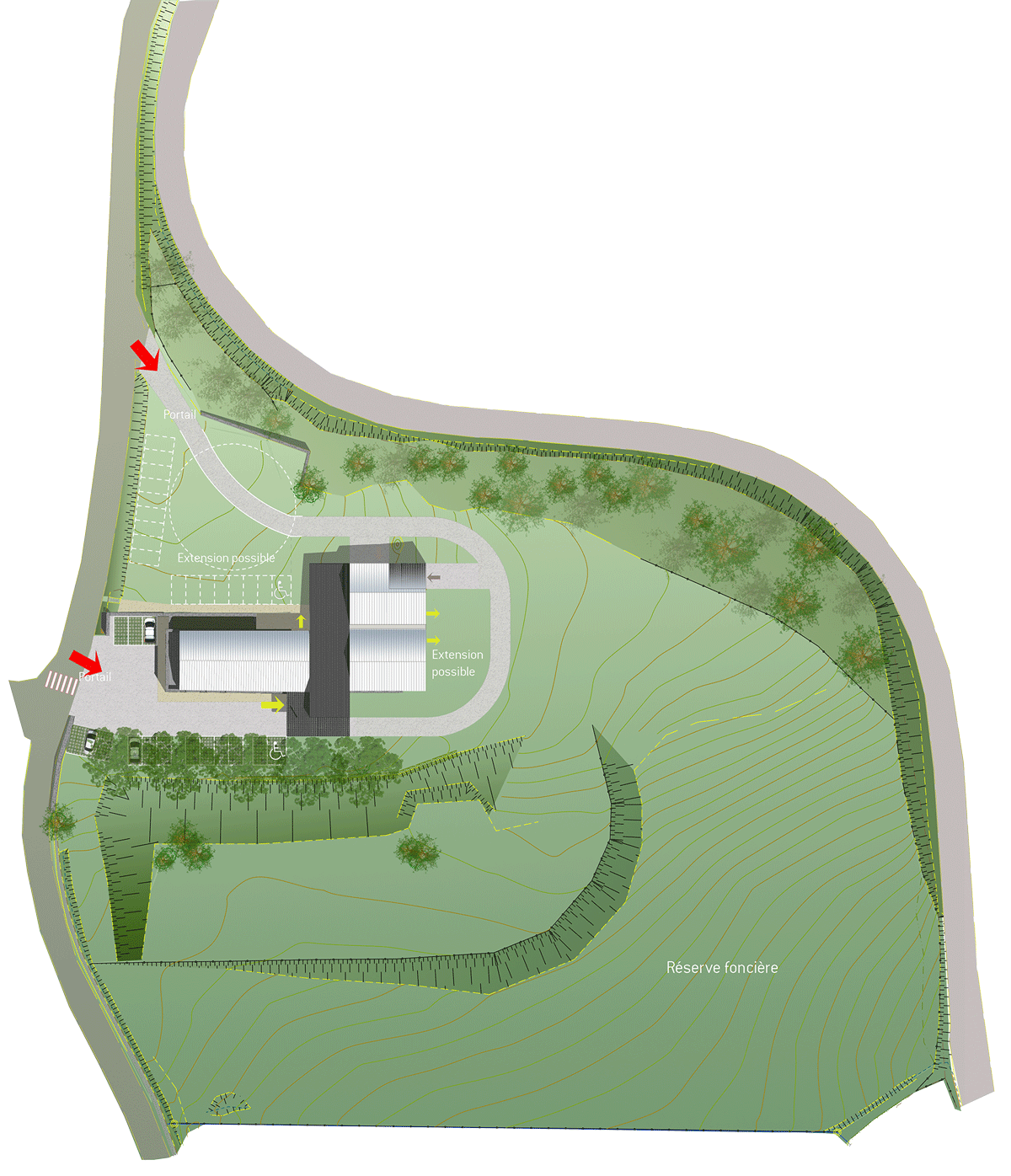
We designed the shape and organisation of the building to allow for several possible extensions :
-
it is very easy to extend the laboratories to the east: the shape of the roofs and the corridors fit perfectly to this,
-
it is easy to build a floor above the practical rooms in the renovated part, in order for example, to extend the tertiary area,
-
the planned vertical circulation also makes it possible to double the volume of the barn (by shifting the construction by one floor) without compromising the aesthetic of the whole.
This environmentally-friendly project limits the amount of land artificialisation and also promotes sustainable and bioclimatic architecture (limited consumption of materials).
We are making the most of the site's advantages, such as its south-facing orientation, which is beneficial in terms of natural light (winter heat), balanced by the row of trees that will shade the glazed areas and prevent overheating during hot periods (summer heat). This is not a traditionnal renovation, but rather of « building inside the ruin » to provide both the modern comfort and functionality needed for the programme, while benefiting from the advantages of the older building.
This type of harmonious dialogue between ancient and contemporary architecture, between vernacular style (guaranteeing the unique character of the project) and international style (demonstrating the purpose of the centre of excellence in microbiology) is a guarantee of quality.
This duality will be reflected in the project's materials, with a streamlined volume (thanks to the continuity of the light zinc cladding) from the existing walls, which are composed of a combination of very dark volcanic stone and white quartz. Black or dark grey aluminium joinery will reinforce this effect. All materials are chosen for their durability and recyclability.



